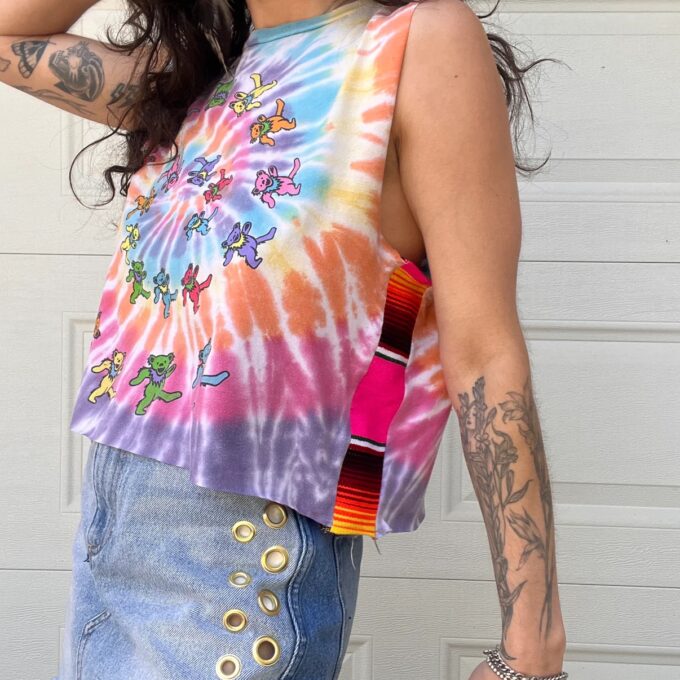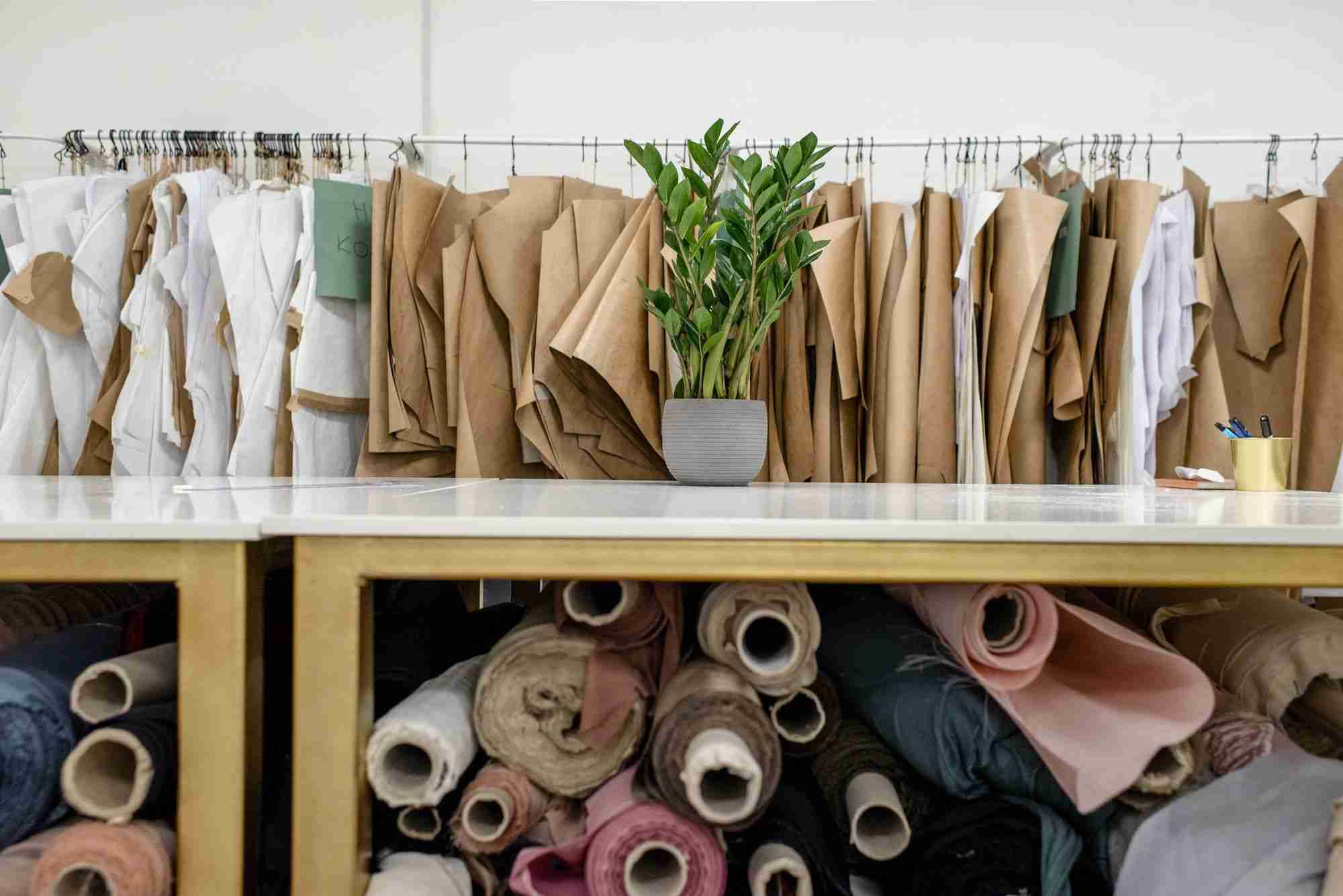What’s the difference between upcycling and recycling clothes? Both upcycling and recycling practices are designed to make use of old materials and make them useful again for a new purpose. The main difference between the two lies in how they deal with the old materials.
Upcycling is a voluntary process where the discarded old material is given a new lease of life and made useful again. Upcycling is a fun and creative way to use old clothes and accessories in a new, more useful way by taking something old and giving it a facelift or purpose.
Recycling clothing, on the other hand, involves taking the discarded garments and reprocessing them so they can be used again. It is the mechanical or chemical processes involved in recycling that make it different from upcycling.

How is Clothing Upcycled?
Clothing upcycling is a creative process where old clothes are transformed into something new and useful. With the right process and tools, you can turn any old piece of clothing into a new, functional item.
Old clothes can be upcycled by ripping, cutting, and sewing. You can also crochet and knit, or you can take apart the fabric into its constituent parts such as cotton, polyester, and fabric protein.
If upcycling clothing sounds like it is a lot, that’s because it is. Anyone can pull up a DIY how-to article on Pinterest, but to upcycle clothing well, you need designer talent to make it comparable to clothing you’d buy new from a mall or e-commerce store.
However, because the upcycling process is less mechanically and chemically taxing than recycling, it’s a great option for sustainable fashion. This is why small businesses and independent designers are creating new, original pieces of upcycled clothing on the RE.STATEMENT marketplace. It’s a smarter, less complicated way to reuse materials, especially when the materials are still in pristine condition and when they’re too unique to be completely destroyed.
How is Clothing Recycled?
Recycling is the scientific process of breaking down waste products, such as paper and fabric, into new products so that less new material ends up in landfills. The process of recycling is often done by different types of organizations including businesses, government agencies, nonprofits, and individuals. Organizations may separate recyclable materials from the waste stream and make sure those materials get reused.
The best way to recycle clothing is to donate your unwanted clothes to a charity that will properly recycle them. You can also take your unwanted clothes to a local clothier who will pay you a little money for the old clothes. You can also take your clothes to a drop off location or a recycling center. While this is a great way to recycle your old clothes, there are some cons to recycling clothes that are worth keeping in mind.
Oftentimes, much of what we want to recycle doesn’t end up getting recycled due to technological constraints. Even then, it takes a long time for your clothes to go through the recycling process and be remade into new textiles or parts, so it would take even longer for your clothes to become fully functional clothes again. This all isn’t to say you shouldn’t recycle; in fact, you should recycle after you’ve found that donating, upcycling, or reusing aren’t viable options.
Pros and Cons of Upcycling Clothing
Pro: Scrapes and Tears Can be Fixed With Sewing Supplies
Scrapes, tears, and rips can be fixed with sewing supplies such as glue, thread, and staples. Designers and small businesses also create new and fresh looks for upcycled clothes by ironing different patterns and prints on them.
Con: Nothing Has Value Unless You Use or Sell It
While upcycling is great for patching up clothing and turning old pieces of clothing into something new, there is no point in upcycling damaged and old pieces of clothing that people won’t want or use. If people aren’t getting the most out of the upcycled clothing, then it’s useless to create it.
Pro: Upcycling Creates Jobs and Helps Support Small Businesses
Upcycling creates jobs and helps increase the income of independent designers and small businesses. It encourages people to do creative and handmade work, and it allows buyers to support groups of sellers who have no intentions of greenwashing in the sustainable fashion industry.
If you are a creative, making and selling upcycled items can be a great source of extra income. If you have an old piece of clothing that you no longer wear or use, you can upcycle it into a new accessory or home decor that you can sell on the RE.STATEMENT marketplace or at your local craft and flea market.

Pros and Cons of Recycling Clothing
Con: Recycling Requires Scheduling and Planning
Recycling requires scheduling and planning. This is because recycling means that the waste is separated from the source and reused. If you want to recycle your clothing, you need to make sure that all of the material is separated from the source.
Because the supply and demand of recycled fabrics is still fluctuating, it can be a long time before recycled fabric is actually used.
Pro: Recycling Reduces Your Carbon Footprint and Increases Green Space
Recycling reduces your carbon footprint and increases green space. If you’re interested in ways to reduce your carbon footprint, recycling can be the way to go. It can also help to preserve land and conserve natural resources. Reducing, reusing, and recycling can help to keep your community clean, healthy, and sustainable.
Which is Better: Upcycled Clothing or Recycled Clothing?
Choosing upcycled fashion offers a compelling narrative of transforming unwanted materials into lasting, unique pieces. Embracing upcycled clothing reflects a sustainable ethos while providing distinctive statement items crafted from quality materials. However, ensuring the upcycled garments’ quality is crucial; purchasing from reputable designers or platforms like RE.STATEMENT guarantees a refined product free from stains or odors, ensuring a favorable experience for the buyer.
In contrast, recycling clothes serves as a valuable method to prevent garments from ending up in landfills, offering an avenue for reusing materials. Recycling requires less preparation than upcycling; a simple wash and dry render clothes ready for the recycling process. However, it demands extensive processing and consumes substantial energy and resources. Although recycling is an eco-conscious choice, the complexity of the process suggests that upcycled fashion should be prioritized when seeking a specific design, acknowledging its smarter, more creative approach to repurposing garments. Ultimately, the decision between upcycled and recycled clothing hinges on individual preferences for unique, sustainable fashion and their willingness to invest in innovative, resourceful creations.



















